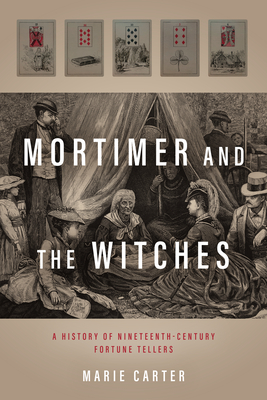The neglected histories of 19th-century NYC's maligned working-class fortune tellers and the man who set out to discredit them Under the pseudonym Q. K. Philander Doesticks, P. B., humor writer Mortimer Thomson went undercover to investigate and report on the fortune tellers of New York City's tenements and slums. When his articles were published in book form in 1858, they catalyzed a series of arrests that both scandalized and delighted the public. But Mortimer was guarding some secrets of his own, and in many ways, his own life paralleled the lives of the women he both visited and vilified. In Mortimer and the Witches, author Marie Carter examines the lives of these marginalized fortune tellers while also detailing Mortimer Thomson's peculiar and complicated biography. Living primarily in the poor section of the Lower East Side, nineteenth-century fortune tellers offered their clients answers to all questions in astrology, love, and law matters. They promised to cure ailments. They spoke of loved ones from beyond the grave. Yet Doesticks saw them as the worst of the worst evil-doers. His investigative reporting aimed to stop unsuspecting young women from seeking the corrupt soothsaying advice of these so-called clairvoyants and to expose the absurd and woefully inaccurate predictions of these "witches." Marie Carter views these stories of working-class, immigrant women with more depth than Doesticks's mocking articles would allow. In her analysis and discussion, she presents them as three-dimensional figures rather than the caricatures Doesticks made them out to be. What other professions at that time allowed women the kind of autonomy afforded by fortune-telling? Their eager customers, many of whom were newly arrived immigrants trying to navigate life in a new country, weren't as naive and gullible as Doesticks made them out to be. They were often in need of guidance, seeking out the advice of someone who had life experience to offer or simply enjoying the entertainment and attention. Mortimer and the Witches offers new insight into the neglected histories of working-class fortune tellers and the creative ways that they tried to make a living when options were limited for them.
UNTAPPED NEW YORK: THE BEST NYC BOOKS OF ALL TIME The neglected histories of 19th-century NYC's maligned working-class fortune tellers and the man who set out to discredit them Under the pseudonym Q. K. Philander Doesticks, P. B., humor writer Mortimer Thomson went undercover<










